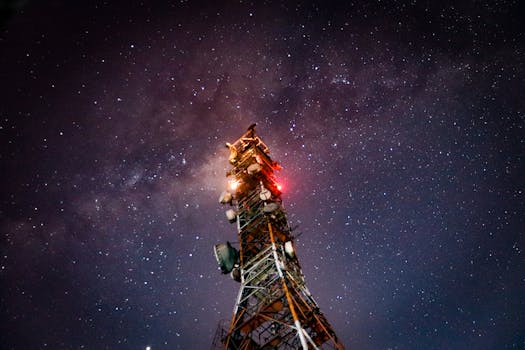
The Rise of Mega-Constellations: Latest Updates in Satellite Telecommunications
Mega-Constellations
The rise of mega-constellations is a significant development in satellite telecommunications, with several companies launching thousands of small satellites into low Earth orbit to provide global internet coverage. This new space technology has the potential to transform the way we communicate, with implications for remote communities, emergency services, and the environment.
The Focus Keyword Mega-Constellations has been a buzzword in the satellite telecommunications industry, with companies like SpaceX, Amazon, and OneWeb leading the charge. These constellations are designed to provide high-speed, low-latency internet connectivity to underserved areas, as well as to support the growing demand for IoT and 5G services.
One of the key drivers behind the rise of mega-constellations is the need for global internet coverage. According to the International Telecommunication Union (ITU), approximately 3.8 billion people worldwide lack access to the internet, with many living in remote or underserved areas. Mega-constellations have the potential to bridge this digital divide, providing opportunities for economic growth, education, and social development.
Technological Advancements
The development of mega-constellations has been made possible by significant technological advancements in recent years. Advances in materials science, propulsion systems, and satellite design have enabled the creation of smaller, more efficient, and cost-effective satellites.
Additionally, improvements in launch technology have reduced the cost of accessing space, making it more viable for companies to launch large constellations of satellites. The reusable rockets developed by SpaceX, for example, have significantly reduced the cost of launch, paving the way for the development of mega-constellations.
The use of advanced technologies such as phased arrays and beamforming has also enabled the development of high-gain antennas, which are essential for providing high-speed internet connectivity. These antennas use complex algorithms to shape and direct radio beams, allowing for more efficient use of bandwidth and increased internet speeds.
Challenges and Concerns
While the rise of mega-constellations has the potential to transform satellite telecommunications, there are also challenges and concerns that need to be addressed. One of the main concerns is the impact of these constellations on the environment, particularly in terms of space debris and light pollution.
As the number of satellites in orbit increases, so does the risk of collisions and the creation of space debris. This debris can remain in orbit for centuries, posing a hazard to operational satellites and spacecraft. Additionally, the launch of thousands of satellites has raised concerns about light pollution, with the potential to interfere with astronomical observations and disrupt the natural environment.
Another challenge facing the development of mega-constellations is the need for regulatory frameworks to govern their use. The ITU and other regulatory bodies are working to establish guidelines and standards for the deployment of mega-constellations, including rules for frequency allocation, orbital slots, and debris mitigation.
Conclusion
The rise of mega-constellations is a significant development in satellite telecommunications, with the potential to transform the way we communicate and access the internet. While there are challenges and concerns that need to be addressed, the benefits of mega-constellations are clear. As the satellite telecommunications industry continues to evolve, it is likely that we will see even more innovative solutions and technologies emerge, further advancing our ability to connect and communicate with each other.




